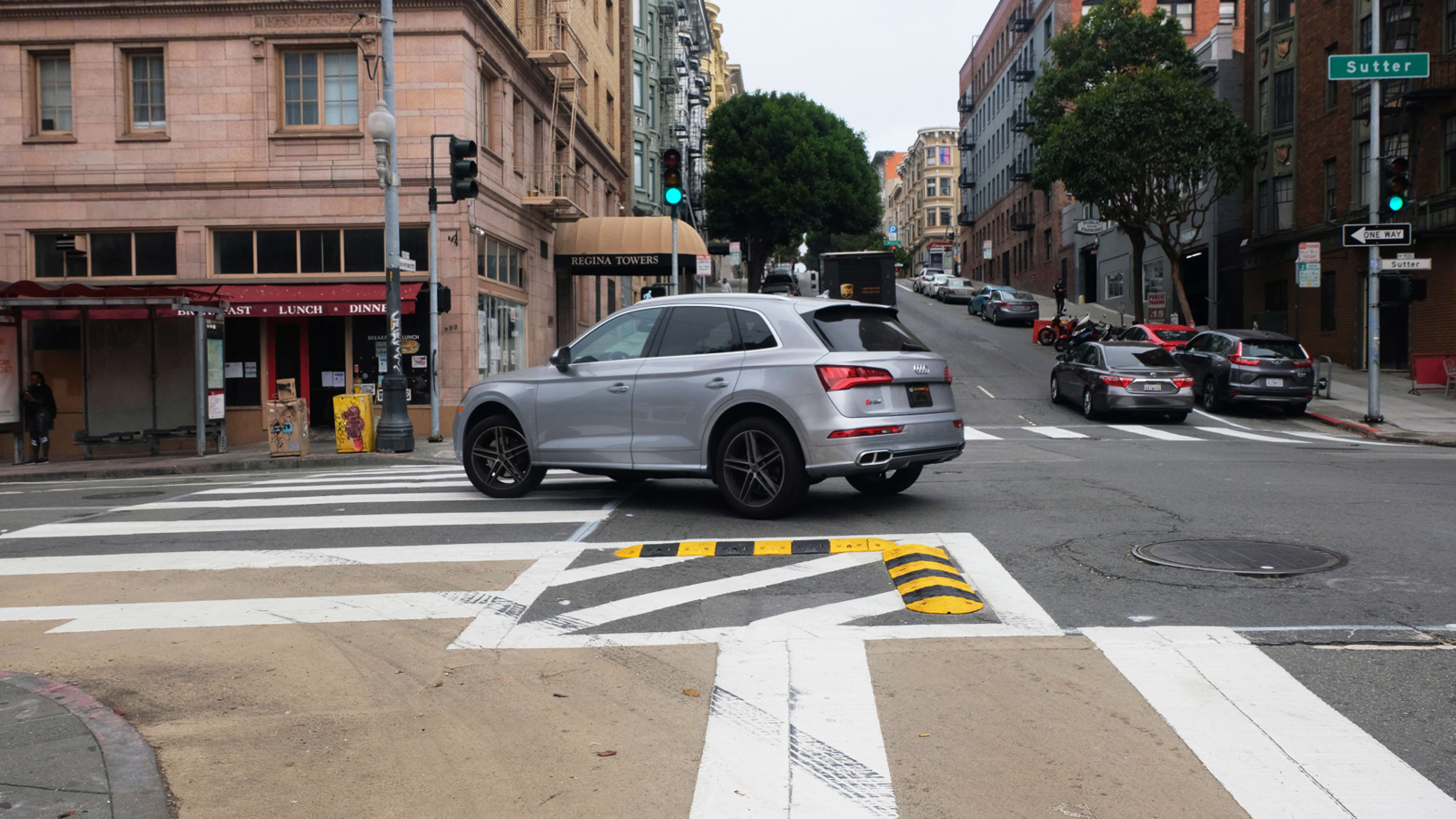Drivers turning left are responsible for a disturbingly high proportion of pedestrian injuries and deaths in the city of San Francisco. Solving the problem could be a matter of design.
More than 300 people are injured by left-turning drivers every year in San Francisco. In 2019, 40% of traffic deaths occurred when drivers making left turns hit pedestrians – mostly people using crosswalks who weren’t seen by drivers until it was too late. Now, the city is dramatically rethinking its intersections to make these dangerous left turns a thing of the past.
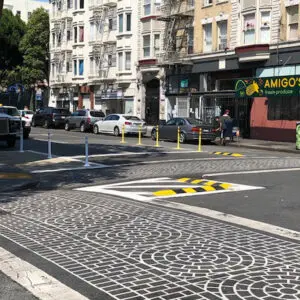
The scope of the problem became evident back in 2018, when the San Francisco Department of Public Health analyzed five years’ worth of left-turn crash data. The agency then teamed up with the San Francisco Municipal Transportation Agency (SFMTA) to better understand why so many deaths were happening in left turn situations. What they found was a mix of design issues and common driver behaviors that unnecessarily put pedestrians at risk. To address both of these problems, SFMTA launched theSafer Intersections Projectto test out new approaches to intersection design, as well as a $2 million grant-funded public education campaign aimed at reducing unsafe driving. The effort is part of the city’sVision Zeroplan, which aims to eliminate traffic-related deaths.
“Unsafe left turns are not unique to San Francisco,” says Uyen Ngo, project manager and Vision Zero education and outreach coordinator at the SFMTA. “We believe the design interventions and education campaign work are applicable to other cities.”
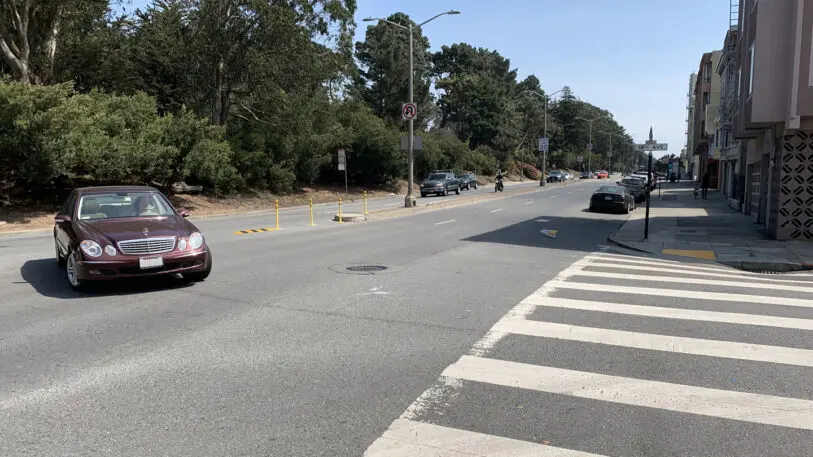
On the design side, the agency found that part of the reason left turns are so dangerous is that drivers are often going too fast and turning at too tight of an angle to properly see whether a pedestrian might be crossing the street. This has deadly consequences, particularly for older people, who make up 31% of pedestrians killed in left turn situations.
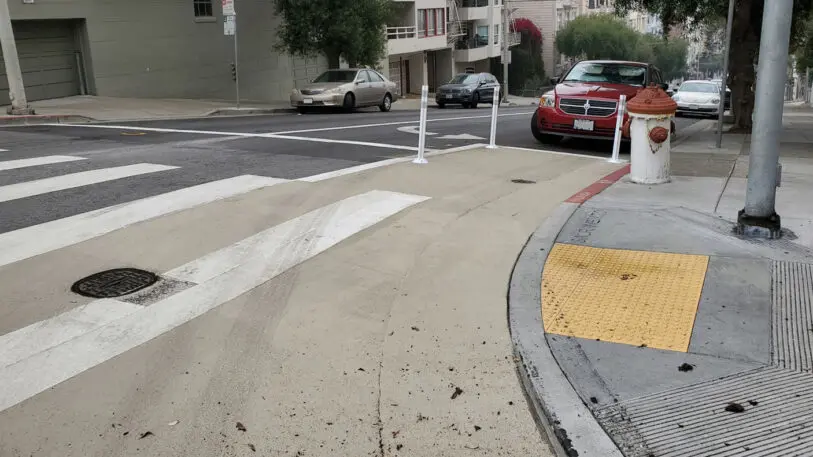
The intersection retrofits are aimed at changing the way drivers navigate during left turns, and include the placement of vertical posts partly inside intersections, six-foot rubber speed bumps that extend the centerline of travel lanes, and large painted zones that show drives where not to drive. These physical elements force drivers to slow down and make more of a right-angle turn through the intersection as opposed to a fast swooping curve. By making it harder to turn quickly, drivers have more time to see people crossing the road.
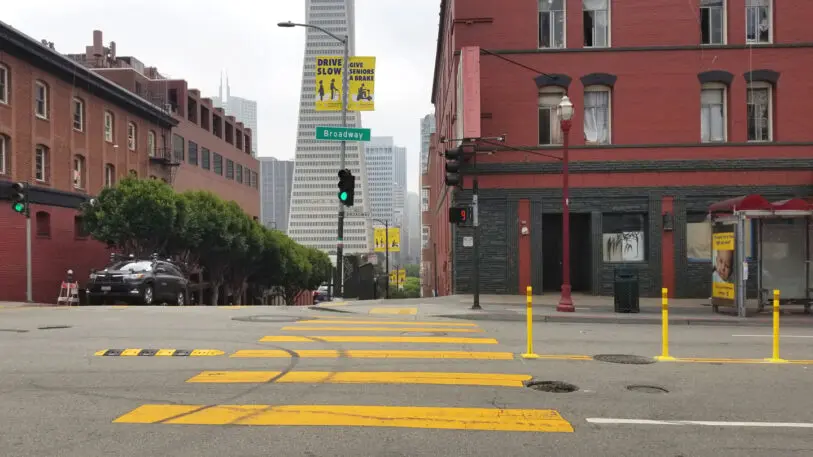
The design interventions were installed at seven intersections in the city last fall. After a year of monitoring, SFMTA hasfoundthat the altered intersections have had significant impacts on the speed and safety of left turns. The interventions reduced the average speed at which drivers make left turns by 17%, and brought a 71% reduction in drivers taking turns faster than 15 miles per hour. More data will be collected to see whether these interventions result in reduced collisions, injuries, and deaths.
The interventions are focused mostly on intersections with traffic signals. Though signaled intersections make up only 13% of the city’s intersections, they are where two-thirds of all left turn collisions occur.
[Image: SFMTA]
For the majority of intersections in the city that don’t have these design retrofits, the agency is trying to change the way people make left turns when driving. Working with behavioral researchers at the Behavioral Insights Team, SFMTA developed specific language to use in order to nudge people into changing their driving behavior. Through a months-long campaign of digital, broadcast, and outdoor advertising in multiple languages, the agency blanketed the city with messaging emphasizing the fact that 40% of traffic deaths involve drivers making left turns. Through surveys, the agency found that there is a greater awareness among residents that speeding is a leading cause of traffic collisions in San Francisco, and a decrease in the number of people who believe it’s acceptable to drive a few miles over the speed limit.
San Francisco’s improved left turns are more than an experiment. These kinds of street engineering changes have been implemented in other cities, including Washington, D.C.; New York; and Portland, Oregon; and studies in those cities have shown similar reductions in speed during turns. SFMTA is now in the process of determining where else these interventions can be put in place across the city. Its Vision Zero plan calls for interventions to be installed in 35 additional intersections.
“The recommendation is to prioritize these treatments at locations with existing high left-turn speeds, conducive street geometry, and lots of people walking and biking,” says Ngo.
Recognize your brand’s excellence by applying to this year’s Brands That Matter Awards before the early-rate deadline, May 3.
